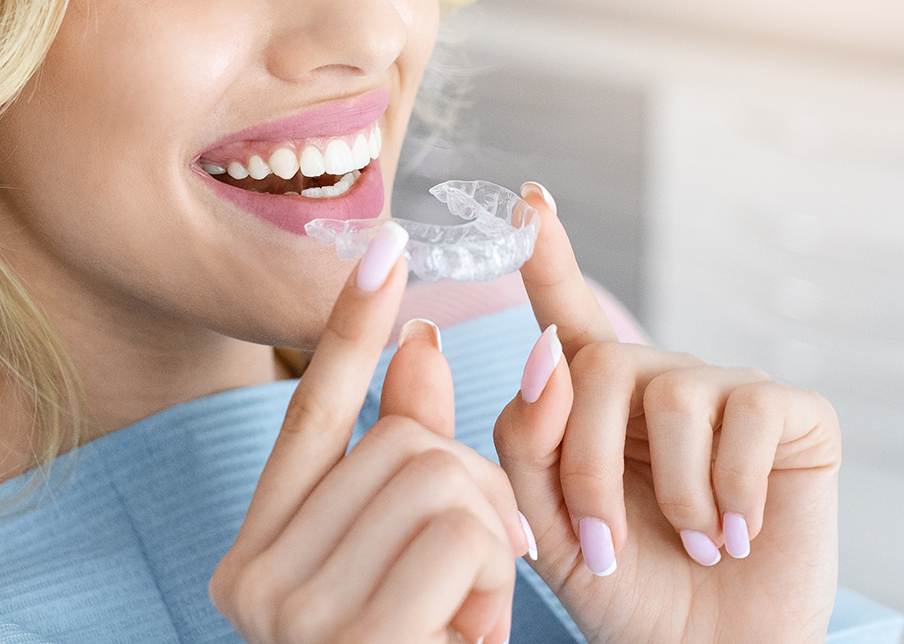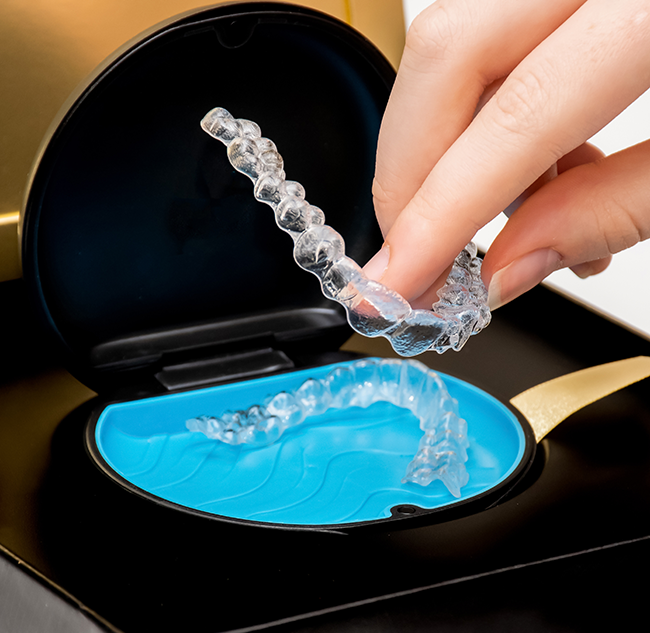
Alternative to traditional fixed braces.



They involve of a series of clear, removable aligners changed every two weeks to achieve straighter teeth. They therefore have been an attractive treatment option, especially for adults, who want to avoid the stigma of wearing visible braces. They are also suitable for those who have already had braces and are now experiencing relapse.
Invisalign can not only improve the appearance of your teeth by creating a straighter smile, but can also improve the health of your teeth and gums by allowing easier access to remove plaque, which can be challenging with crowded teeth.




Our photo galleries at Family Dental Clinic – West End all contain genuine patients that have undergone one or more than one of general dentistry, cosmetic dentistry or restorative dentistry treatments. Every image of before or after photos are true and correct, all having been performed in the West End practice located in Brisbane.






Dedicated to creating beautiful healthy smiles using the latest dental technology with precision and care
Invisalign is a modern orthodontic treatment option that helps straighten teeth without using traditional braces. It uses a series of clear, removable aligners to gradually shift the teeth into the desired position. Here’s how Invisalign works:
Aligner treatment offers several advantages over traditional braces, such as improved aesthetics, increased comfort, and the ability to remove the aligners for eating and oral hygiene. However, the success of Invisalign treatment depends on wearing the aligners consistently and following your dental specialist’s instructions.
The duration of Invisalign treatment can vary, usually taking around 12 to 18 months, but it could be shorter or longer depending on individual needs. Consistently wearing the aligners as instructed and keeping up with regular checkups play a role in achieving the desired results within the estimated timeframe. Your orthodontist will guide you through the process and provide a more specific timeline based on your unique situation.
Invisalign and traditional braces have their advantages. Here are a few points to consider:
Choosing between Invisalign and traditional braces depends on your specific needs and preferences. It’s best to consult with a dental specialist to determine the most suitable option for you.
No, you should not eat or drink while wearing Invisalign aligners, except for water. Consuming food or beverages other than water with aligners in can lead to staining, as substances like coffee, tea, and coloured drinks can discolour the clear aligners. Additionally, chewing while wearing aligners can damage them, potentially causing cracks or warping. Leaving aligners in while eating also increases the likelihood of food particles getting trapped, which can lead to dental issues like cavities and gum disease if proper oral hygiene isn’t maintained. To prevent these problems, it’s essential to remove your aligners before eating and to clean your teeth thoroughly before putting them back on.
You should typically change to a new set of Invisalign aligners approximately every 1-2 weeks. The exact schedule will be determined by your dentist based on your treatment plan. Each set of aligners is slightly different from the previous one, gradually shifting your teeth into the desired position. It’s important to follow your dental specialist’s instructions regarding when to switch to the next set of aligners to ensure that your treatment progresses smoothly and effectively. Regularly changing your aligners as prescribed is crucial for achieving the desired results within the estimated treatment timeline.
Invisalign is effective for treating many common orthodontic issues, but it may not be suitable for all types of problems. Invisalign can typically address issues such as crowded teeth, gaps between teeth, overbite, underbite, crossbite, and certain cases of mild to moderate misalignment. However, severe orthodontic issues or cases requiring significant tooth movement may still require traditional braces or other specialised orthodontic treatments. It’s important to consult with an experienced Invisalign provider, such as Family Dental Clinic West End to determine if Invisalign is suitable for your specific orthodontic needs and to discuss the best treatment options available to achieve your desired results.
To keep your Invisalign aligners clean and maintain their clarity, you should rinse them under lukewarm water every time you remove them. Brush them gently with a soft toothbrush and clear, unscented liquid soap to remove any food particles and prevent plaque buildup. Avoid using toothpaste, as it can be abrasive and cause scratches. Additionally, soak your aligners in Invisalign cleaning crystals or a denture cleaner once a day to ensure they stay fresh and hygienic. Always store your aligners in their case when not in use to prevent damage or loss.
Invisalign is effective for treating a wide range of orthodontic issues, including mild to moderate cases of crooked teeth, overbites, underbites, crossbites, and gaps between teeth. However, it may not be suitable for severe orthodontic problems or complex bite issues that require more extensive correction. During your consultation, your dentist or orthodontist will evaluate your specific case to determine if Invisalign is the right treatment for you. In some cases, traditional braces or other orthodontic treatments may be recommended.
One of the advantages of Invisalign is that there are no food or drink restrictions, as the aligners are removable. You should always take out your aligners before eating or drinking anything other than water. This prevents food particles and beverages from staining or damaging the aligners. After eating, brush your teeth before putting the aligners back in to maintain oral hygiene and prevent plaque buildup. By removing the aligners during meals and snacks, you can continue to enjoy all your favourite foods without worry.
I received absolutely fantastic care from Dr. Georgio and his assistance today. Also was greeted by a very kind reception team. Thanks for the great work team, I look forward to coming back!
Dr Kosta did great work on both my crowns and there was very little discomfort after the second one. Very happy with the service as well from the rece… Read More
Dr George was very gentle and respectful to me. An absolute delight. He was also very thorough and efficient. He has become my dentist for the rest o… Read More
A lovely family friendly practice – great communication from front desk staff and they are very pleasant to deal with. Dr Alice is so kind and patient… Read More
Kosta was very good, explaining exactly what my options were and ensuring my comfort all through the procedure. He gave me an aftercare sheet detailin… Read More